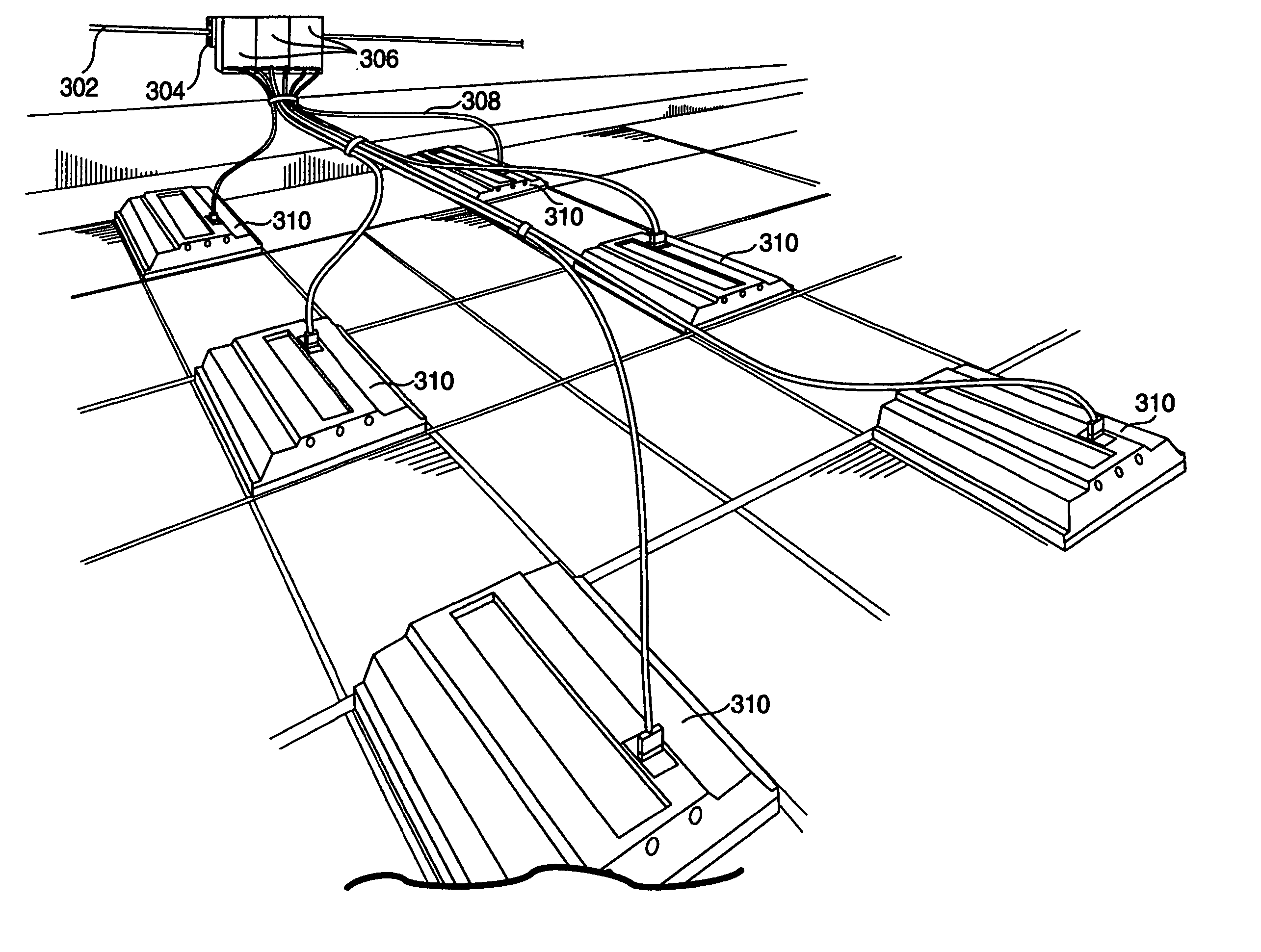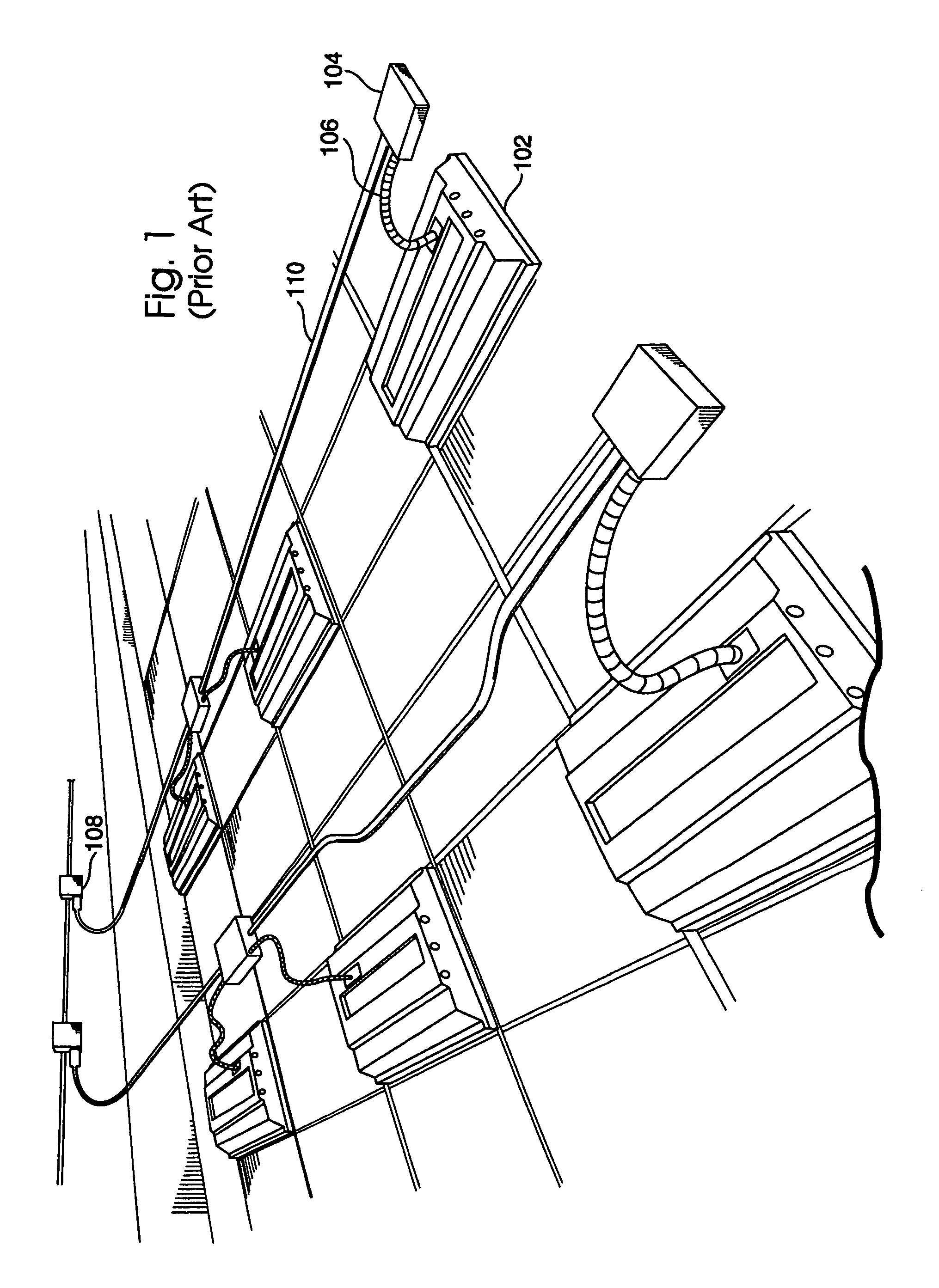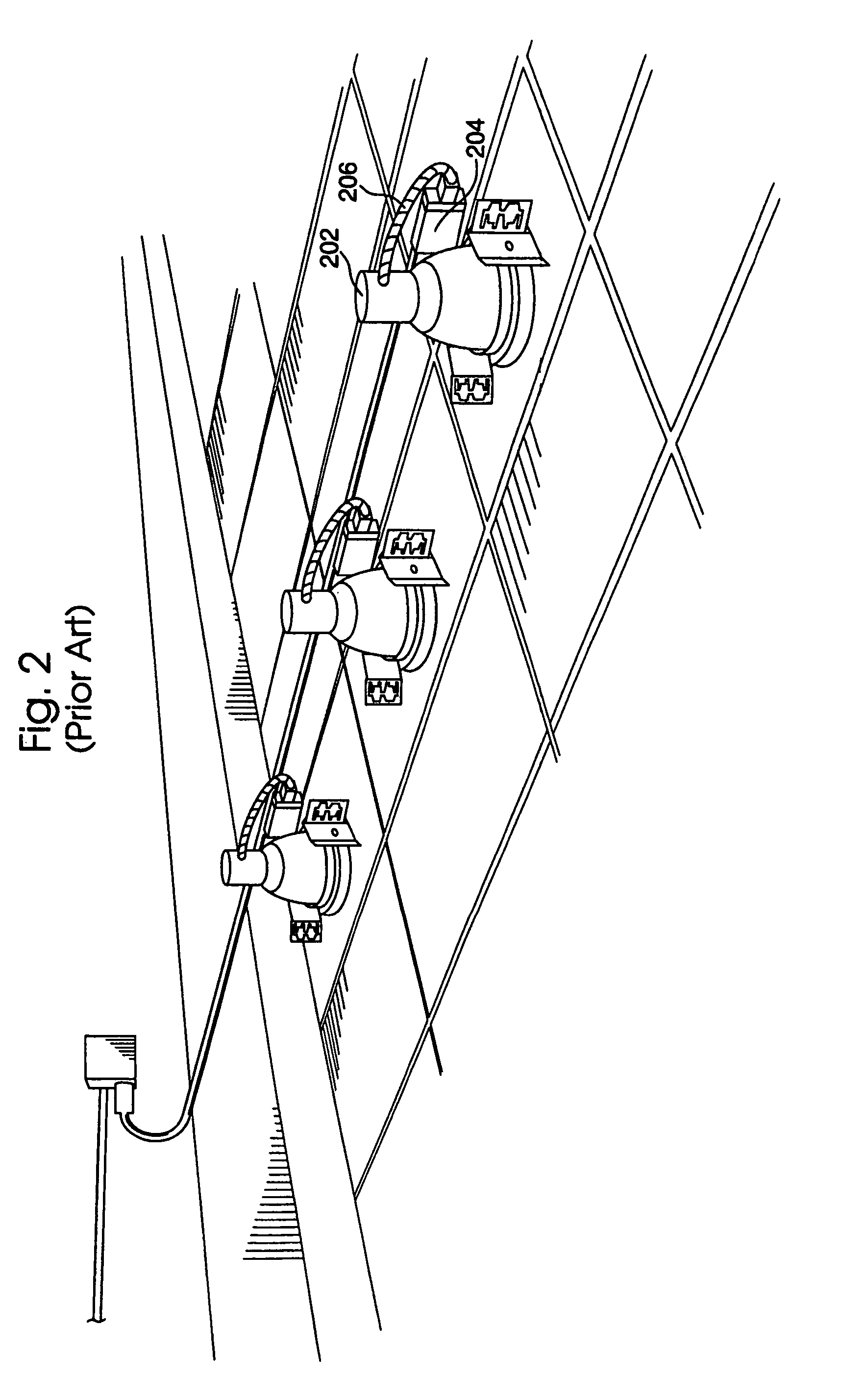Constant current Class 3 lighting system
a lighting system and constant current technology, applied in emergency power supply arrangements, instruments, process and machine control, etc., can solve the problems of significant danger, inflexible and costly steel conduit and whips, required in class 1 systems for safety measures, and time-consuming installation of steel conduit around obstructions, etc., to achieve easy modular connection, increase flexibility in reconfiguration and relocation of lighting fixtures, and facilitate installation
- Summary
- Abstract
- Description
- Claims
- Application Information
AI Technical Summary
Benefits of technology
Problems solved by technology
Method used
Image
Examples
Embodiment Construction
[0025]The present invention is a lighting system having a power supply, at least one luminaire, and a flexible cable for connecting the power supply to the luminaires. The power supply preferably includes a power supply input to receive a power line signal, a circuit to convert the power line signal to a substantially constant-current, high-frequency signal, and a power supply output to output the substantially constant-current, high-frequency signal. Each luminaire also preferably includes a lamp, a housing to hold the lamp, luminaire input to receive the high-frequency signal from the power supply, and a lamp driver circuit configured to use the received output signal to operate the lamp.
[0026]FIG. 3 shows one exemplary embodiment of the lighting system. In this embodiment, a junction box 304 is supplied with a power line signal (typically, either a 60 Hz@120V or 277V signal) through a pair of power line conductors and a safety ground via a steel armored conduit 302. In the depict...
PUM
 Login to View More
Login to View More Abstract
Description
Claims
Application Information
 Login to View More
Login to View More - R&D
- Intellectual Property
- Life Sciences
- Materials
- Tech Scout
- Unparalleled Data Quality
- Higher Quality Content
- 60% Fewer Hallucinations
Browse by: Latest US Patents, China's latest patents, Technical Efficacy Thesaurus, Application Domain, Technology Topic, Popular Technical Reports.
© 2025 PatSnap. All rights reserved.Legal|Privacy policy|Modern Slavery Act Transparency Statement|Sitemap|About US| Contact US: help@patsnap.com



